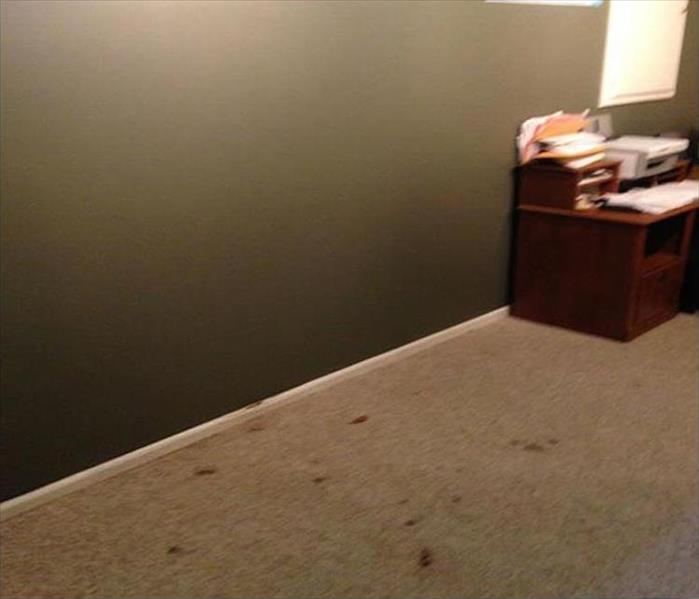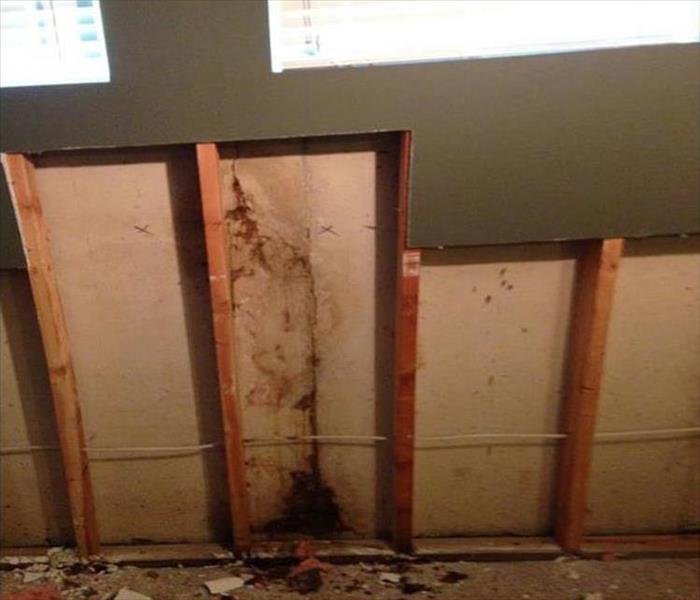
Dallas, TX Mold Damage Remediation
Because of the humid subtropical climate, Dallas can expect up to 40 inches of rain every year. The potential for storm damage and subsequent water concerns can require black mold damage repairs and remediation services. We appreciate how quickly these organisms can spread in a structure, making it critical for our remediators to respond fast with cleaning and containment techniques. Our professionals can help with:
- Attic mold
- Basement mold remediation
- Bathroom mold removal
- Black mold
- Mold specialists
- Mold remediation
How Does Black Mold Removal Occur in Dallas Homes?
Black mold can be a substantial threat to Dallas homes, making it vital to implement remediation and mold removal strategies as soon as possible. Exposure to active colonies can cause health effects, making it crucial that the work occurs by trained and certified Applied Microbial Remediation Technicians (AMRT) as we have on our SERVPRO team. We can implement multiple surface treatment solutions, like sanding and dry ice blasting, but can also rely on controlled demolition if these options are not possible.
Are Black Mold Damage Repairs Always Needed in Dallas?
When controlled demolition occurs, it is our duty with a general contracting license to work to repair and reconstruct the property as needed. We must also assess the cause of mold growth and moisture concerns so that our repairs and rebuilding address structural concerns and vulnerabilities allowing moisture penetration into the property.
See our main page for more on mold remediation and removal.
SERVPRO of Southeast Dallas County
- 24-Hour Emergency Service
- Faster to Any Size Disaster
- Highly Trained Mold Remediation Technicians
- Specialized Mold Remediation Equipment
- A Trusted Leader in the Restoration Industry
- Locally Owned and Operated
If You See Signs of Mold, Call Us Today – (972) 227-0800
Understanding Mold
Confusion and misunderstanding surround the topic of mold and mold remediation. Some restoration businesses even make claims to remove all mold from a building. This is a fallacy. Mold spores occur naturally almost everywhere, both indoors and outdoors. These microscopic spores float along in the air and can enter a home or business through windows and HVAC systems. Consider these facts:
- Mold is present almost everywhere, indoors and outdoors.
- Mold spores are microscopic and float along in the air, and may enter your home through windows, doors, or AC/heating systems or even hitch a ride indoors on your clothing or on a pet.
- Mold spores thrive on moisture. Mold spores can quickly grow into colonies when exposed to water. These colonies may produce allergens, irritants, and toxins.
- Before mold remediation can begin, any sources of water or moisture must be addressed. Otherwise, the mold may return.
- Mold often produces a strong, musty odor and can lead you to possible mold problem areas.
- Even higher-than-normal indoor humidity can support mold growth. Keep indoor humidity below 45 percent.
Faster to Any Size Fire Disaster
A minor mold problem can quickly become a major infestation if left untreated. We can start the remediation process immediately after you contact us. A faster response lessens the mold damage, limits additional damage, and reduces the remediation cost.
Locally Owned, with National Resources
We live and work in this community too; we might even be neighbors. As a locally owned and operated business, SERVPRO of Southeast Dallas County is close by and ready to respond to your mold damage emergency. We are proud to be an active member of the Dallas community and want to pitch in and help make our community the best it can be.
We are proud to serve our local communities:
Highly Trained Water and Mold Restoration Specialists
As water and mold damage specialists, we have the experience, the expertise, and the advanced training that enables us to get your property restored quickly and thoroughly. Learn about our water and mold training and certificates.
The Mold Remediation Process
Every mold damage scenario is different and requires a unique solution, but the general mold remediation process stays the same. The steps listed below illustrate our “typical” process:
Step 1: Emergency Contact - (972) 227-0800
We’re available 24 hours, 7 days a week to answer your phone call. Our consultant will guide you through this process, asking questions that will allow us to better understand your situation and to determine the needed equipment and personnel.
Step 2: Inspection and Mold Damage Assessment
We carefully inspect your property for visible signs of mold. Mold feeds on cellulose and water and can be hidden from plain view. We use various technologies to detect mold and hidden water sources.
Step 3: Mold Containment
Our professionals use various containment procedures to prevent the spread of mold. We may use advanced containment procedures like negative air chambers to isolate the contaminated area with physical barriers and negative air pressure to keep the mold spores from spreading during the cleanup process. All fans and heating and cooling systems will be turned off to prevent the spread of mold.
Step 4: Air Filtration
We use powerful air scrubbers, HEPA vacuums, and other filtration equipment to remove microscopic mold spores out of the air. This air filtration process and our mold containment process help to prevent the spread of these mold spores while the mold remediation is in process.
Step 5: Removing Mold and Mold-Infested Materials
Depending on the amount of mold growth and the types of surfaces involved, the mold remediation process can vary significantly. In general, we’ll use antifungal and antimicrobial treatments to eliminate mold colonies and to help prevent new colonies from forming. Depending on the severity of the infestation, we may need to remove drywall, carpeting, and other porous materials.
Step 6: Cleaning Contents and Sanitizing
We clean your furniture, decorative items, curtains, clothing, and other restorable items affected by mold, using a variety of cleaning techniques to clean and disinfect your belongings. We’re also trained to remove odors and provide deodorization using fogging equipment.
Step 7: Restoration
Depending on the level of mold damage, drywall, subfloors, and other building materials may have been removed. Restoration may involve minor repairs, such as replacing drywall, painting, and installing new carpet; or it may entail major repairs such as the reconstruction of various areas or rooms in a home or business. The restoration step gets your home or business back to normal.
SERVPRO knows Mold
Here at SERVPRO of Southeast Dallas County we understand what it takes to properly remediate a mold situation in Dallas, TX. Encountering mold can be worrisome for any homeowner, but SERVPRO is here to put your mind at ease. We have the right tools and trained professionals to get the job done right. Give us a call at (972) 227-0800 and we will be on our way to help.






 24/7 Emergency Service
24/7 Emergency Service



